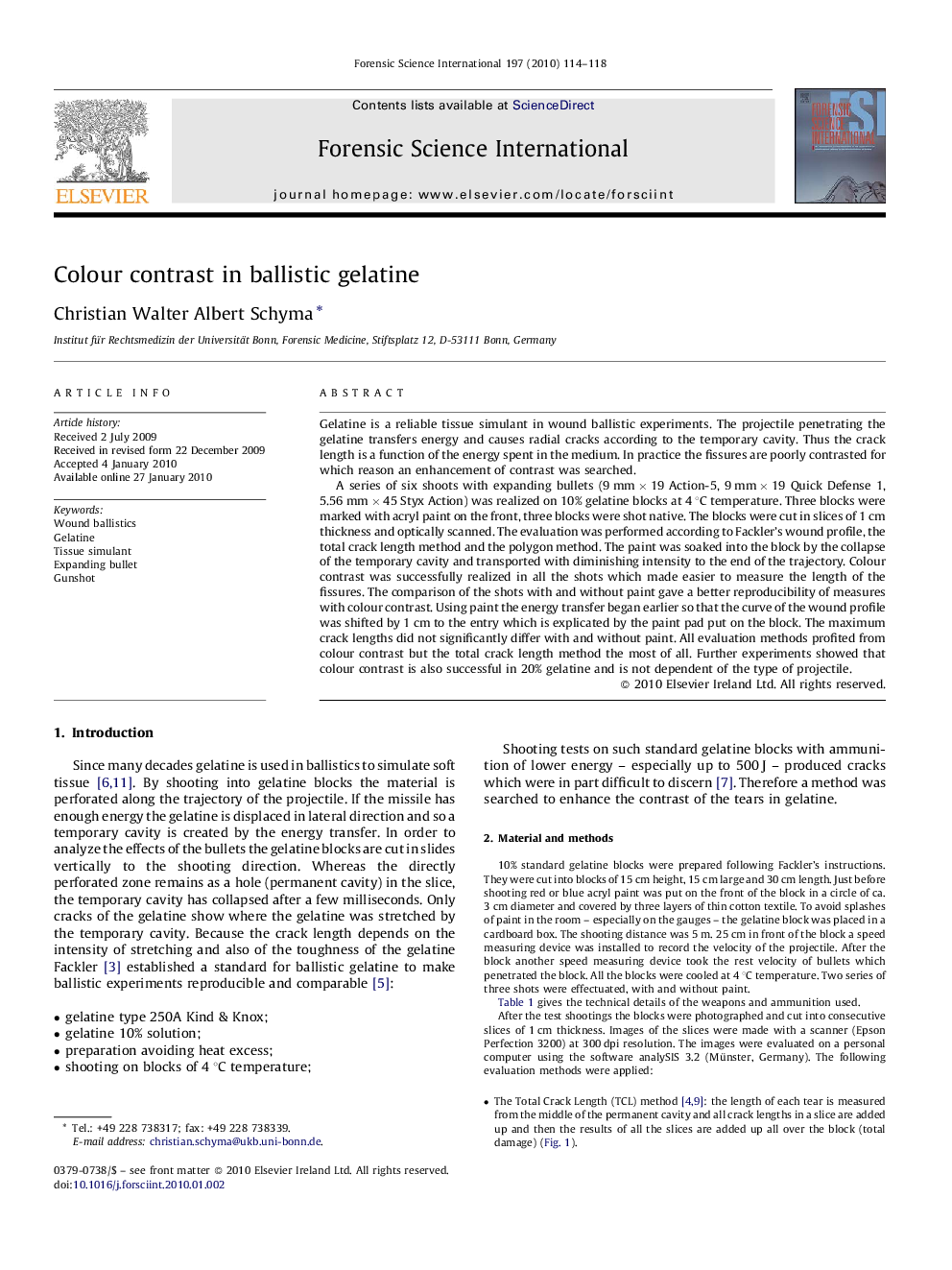| Article ID | Journal | Published Year | Pages | File Type |
|---|---|---|---|---|
| 97112 | Forensic Science International | 2010 | 5 Pages |
Gelatine is a reliable tissue simulant in wound ballistic experiments. The projectile penetrating the gelatine transfers energy and causes radial cracks according to the temporary cavity. Thus the crack length is a function of the energy spent in the medium. In practice the fissures are poorly contrasted for which reason an enhancement of contrast was searched.A series of six shoots with expanding bullets (9 mm × 19 Action-5, 9 mm × 19 Quick Defense 1, 5.56 mm × 45 Styx Action) was realized on 10% gelatine blocks at 4 °C temperature. Three blocks were marked with acryl paint on the front, three blocks were shot native. The blocks were cut in slices of 1 cm thickness and optically scanned. The evaluation was performed according to Fackler's wound profile, the total crack length method and the polygon method. The paint was soaked into the block by the collapse of the temporary cavity and transported with diminishing intensity to the end of the trajectory. Colour contrast was successfully realized in all the shots which made easier to measure the length of the fissures. The comparison of the shots with and without paint gave a better reproducibility of measures with colour contrast. Using paint the energy transfer began earlier so that the curve of the wound profile was shifted by 1 cm to the entry which is explicated by the paint pad put on the block. The maximum crack lengths did not significantly differ with and without paint. All evaluation methods profited from colour contrast but the total crack length method the most of all. Further experiments showed that colour contrast is also successful in 20% gelatine and is not dependent of the type of projectile.
